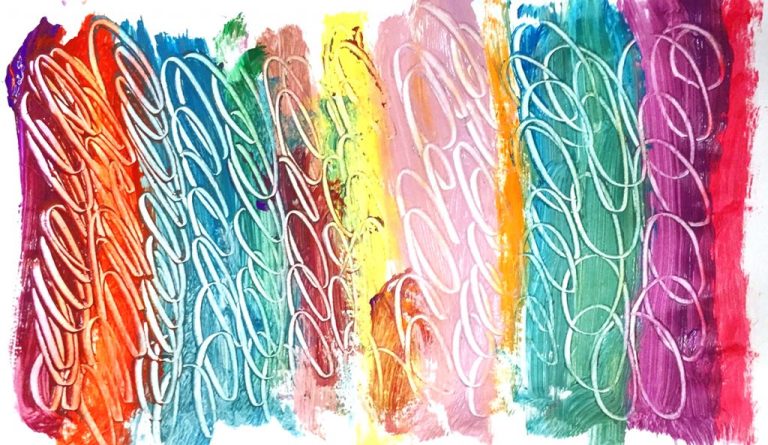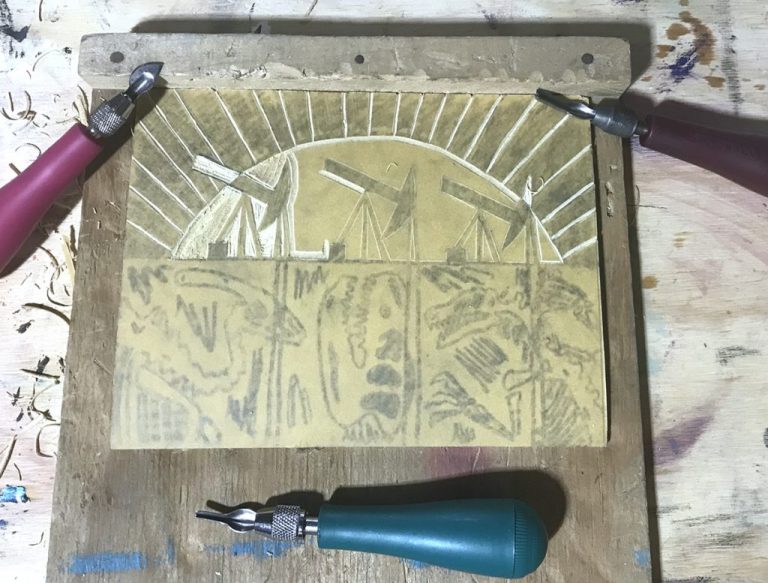If you are new to teaching, the idea of parent-teacher conferences may intimidate or excite you. If you are a veteran art teacher, you may find it routine and part of something we are required to do. It is also possible you lie somewhere in between. Nevertheless, these meetings are extremely important and can help validate the arts in schools. In fact, having a strong relationship with the community, school board, and administration can lead to a successful art program.
Here are three ways forging these connections can show people on all sides why schools need art:
- Highlights the types of activities their students will be participating in.
- Shares your teaching style and how you facilitate their students’ learning.
- Provides transparency around the art budget, which in many cases is still funded by tax dollars.
Hence, conferences become a fantastic time to be an ambassador for the arts, your profession, and your students. Preparing for parent-teacher conferences involves being composed, professional, efficient, and a clear communicator. Let’s break that down into eleven tangible tips so you can be as prepared as possible!

1. Be sensitive and empathetic.
When speaking to parents or guardians at conferences, it is helpful to remember we are speaking about someone else’s loved ones. Therefore, being sensitive about what we say and how we say it is key to garnering positive long-term relationships and student success. Consider how you can shift the tone and rephrase the wording to be more about the student’s potential and growth.
For example, instead of saying, “Your child loses points on their work because they are extremely sloppy and careless,” try, “Your child is extremely creative and comes up with such fun ideas! Unfortunately, they are rushing through their work, which is evident in their lack of craftsmanship. The extra pencil marks and lack of details take away from the brilliance of their idea and are not an accurate showcase of the skills they learned during this unit. I’d love to see them slow down and take more time to execute their ideas moving forward!”
2. Speak two positives before a constructive comment.
This adage may help diffuse a difficult conversation if you have to deliver some hard truths to a parent or guardian about their student. If you need to give a constructive comment, try something positive first. “Your child comes to class prepared and is eager to learn. They bring a positive attitude and really boost the class’s overall mood. I love their level of excitement! I have noticed their excitement often becomes a distraction because they blurt out answers or get out of their seat. I have instructed them to raise their hand when they want to speak and to write down their thoughts on a sticky note if they cannot be called on right away.” This statement starts off friendly, demonstrates you acknowledge the positive in their student, delivers the news of improvement respectfully, and ends with a solution to the behavior you want to see modified.
3. Be professional.
No matter what happens, always remain calm and professional. Stay focused on the topic(s) of discussion, and do not let emotion get the better of you. Sometimes a parent may get upset if you have to deliver bad news, you may be having a long day, or you are emotionally invested in wanting to see a change and the meeting did not go as planned. Stay composed and choose your words carefully. It is okay to take a break, take a deep breath, or even schedule a follow-up meeting at a later time.
4. Dress to impress.
You are an ambassador for the arts, so wear something that says you care about your profession, take pride in your work, and are a role model for the little artists you teach. It is okay to be yourself and dress creatively if that is natural for you. It is also fine to wear a tie or a blouse if looking formal is more comfortable for you. Leave the jeans and t-shirts at home for this day, or better yet, save them for casual Friday!
Here are four ways to provide evidence of great care and share a student’s performance.

1. Communicate clearly and consistently.
The parent and teacher can be natural partners in a school relationship with the shared goal of educating the student. The more we can do to show the parent or guardian we have their student’s interest at heart, the more we build trust. We want to convey that their student is safe in our care and is performing the best they can in our studio environment. Clear and consistent communication is key to fostering these partnerships.
Here are three reminders:
- Make phone calls and send emails or letters promptly.
Pass on feedback and information in a timely fashion. Communication before conferences leaves zero surprises when reiterating difficult information. - Send communications about positive things too!
Sometimes we tend to focus on the negative when making parent contacts. Be intentional about sharing the good, like when students are kind and helpful, make an artistic breakthrough, or grow in a particular area. - Be clear and matter of fact.
Keep the chat focused on the student and use their artwork and assignments to support your points. Provide only solutions you are willing to employ and enlist the parent to partner in their child’s learning.
2. Show student work.
It can be tricky to have every single piece of student art at your disposal during conferences, especially if they are not held in your classroom or if you have 600 students. But showing parents how their student earned a particular grade or having an example to illustrate a piece of feedback is helpful. It may be useful to have several varying examples of work with you, such as one exemplary piece, one average piece, and one piece that needs work.
3. Keep your grade book and rubric(s) up-to-date and on hand.
Going along with the aforementioned strategy, help parents visibly see how a grade was given. Do not assume that a parent or guardian understands your grading system and rubric. Walk them through your protocols with patience, kindness, and directness. You may also want to have a copy of your district policies or the school handbook to reference.
4. Tidy your space.
Making sure your classroom is organized when loved ones enter is just like cleaning your house before someone comes over for dinner. If your classroom is in disarray, this may give the impression you are ineffective or uninviting.
Again, we are stewards of the arts, people’s children, and the budgets for our classrooms. Let us give the notion that we know how to handle these responsibilities. Many creative types and right-brained thinkers are pegged for a lack of organization and endless stacks of materials or artworks. A classroom environment can still be fun and creative without being “messy.”
Here are three final ways conferences can be efficiently structured to maximize everyone’s time.

1. Post signs with your name, role, room number, and photo.
As a parent, walking into their child’s school can be intimidating. Post several signs with your name, room number, and headshot. Put one in the entry door of the school and another where you are sitting, like a mall directory. This shows parents exactly who you are and what you do. Assist them in finding you so you can speak to as many parents as possible!
2. Consider team conferences with the art department or other specialist staff.
It may sound like a wild idea but team up with your colleagues to make conferences a one-stop shop. Parents may be juggling multiple meetings with multiple teachers for multiple children. It may also be before or after other things like sports games, recitals, meals, bedtimes, bathtimes, homework, or prep for the next day. Making things easier on them with the physical education, music, and art teacher in the same room can save everyone time and energy. Plus, it can really hone into the student’s victories and struggles when the team and parent(s) can see repeated patterns across the board.
3. Team up with the homeroom teacher.
Pick out some students you really need to have a parent-teacher conference for and pair up with their homeroom/classroom teacher. Much like the previous tip, this can save the parent time and energy. In rather difficult conversations, it can also mean more support or reinforcement for what you are seeing in your classroom, especially if the homeroom teacher sees the same things. If it is an especially heavy topic, have an administrator or counselor present for backup.
Using some of these ideas can make conferences more fruitful and less intimidating for you and the parents. Keep the focus on the student and their growth in your class by being professional with clear communication. The more parents and guardians you interact with and get to know, the more you can advocate for the visual arts and your program long-term. We spend a lot of time educating young artists because we love doing so. It’s important to make sure we convey to caretakers that we are passionate about and care for their children as much as they do!
How do you prepare for parent-teacher conferences?
Do you have any other tips or advice for conferences?





